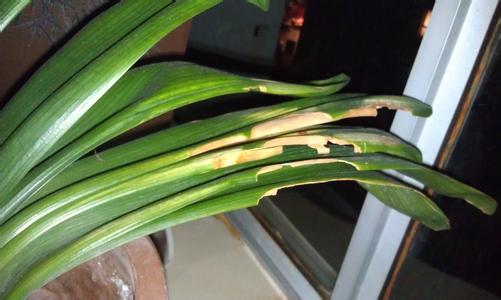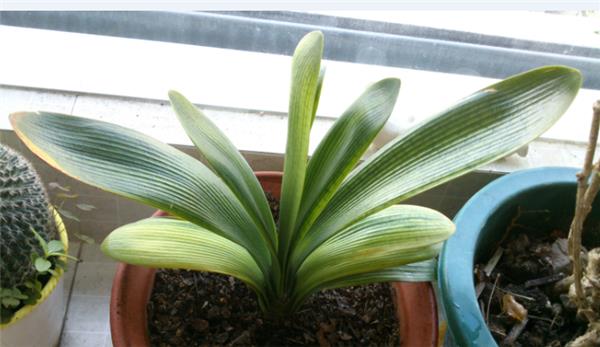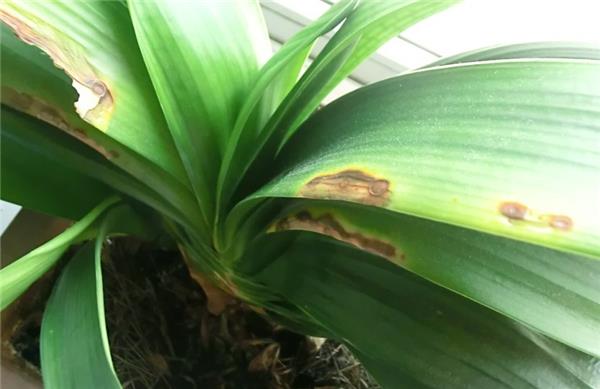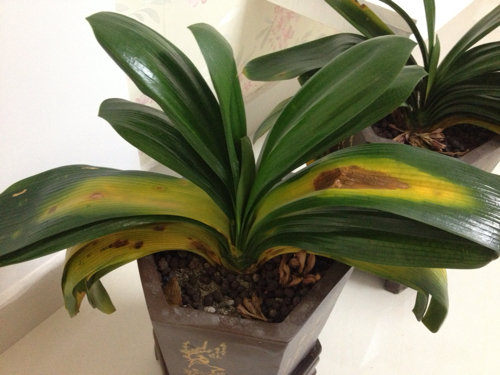How do you raise a leaf?
In the case of improper maintenance and management, the fat and tender leaves of Cymbidium will turn yellow and even wither, some flower friends will ignore their growth, and some flower friends will take relevant measures to correct them, but if you do not find the specific source and blind treatment will end up in vain, then what should be done about the rotten roots of Cymbidium? What if the leaves of Cymbidium turn yellow and lose their leaves?
What if the leaves of Cymbidium turn yellow and lose their leaves?
First, shading: put the magnolia in the outdoor shade in summer, if you can hide from the direct sun at noon, and it is most ideal to see the sun in the morning and evening.

Second, cooling: in addition to putting the magnolia in the ventilated place, but also put the magnolia basin on the pool or water (with a plank pad), and often spray water around the place and on the foliage of the plant, and spray the foliar surface with a new high-fat film, which can prevent leaf virus infection and make the branches and leaves green and luxuriant.
Third, lose weight: when the temperature of the place where the magnolia is kept above 25 ℃, it is necessary to lose weight or stop fertilizing properly, so as not to fertilize too much and burn the fleshy root. If you apply more fertilizer in spring, you can replace 1/2 of the pot soil from the top in summer. If the temperature can be reduced to below 20 ℃, fertilizer can still be applied.
Fourth, watering: it is necessary to adhere to the principle of watering half-dry and watering thoroughly. Do not let water flow into the heart of the leaves, so as not to cause rotten heart disease and lead to "beheading".
Fifth, pest control: affected by insect pests, you can spray the foliar surface with 1000ml / 1500x dichlorvos solution + new high-fat membrane.
What should I do with the rotten roots of the gentleman orchid?
Gentleman orchid seedlings yellow, leaves with macula, may be rotten roots, can break the soil to see. It is found that the rotten roots of orchids, rinse with clean water, soak them in 1/1000 potassium permanganate solution (into lavender) for an hour, rinse with clean water, remove the rotten roots after drying, then apply plant ash to the removed parts, plant them into new pots, and place them in a 25 ℃ ventilated place. Do not water too much. New roots can grow in about 30 days.
If the bottom leaves grow new roots from the axils of the leaves, yellowing the leaves is a normal metabolism, so don't worry too much.

What if the leaves of Cymbidium turn yellow?
1. The leaves of Cymbidium are yellow, and the middle leaves are black and rotten.
Solution: the emergence of this symptom requires the above nine methods to prescribe the right medicine to the case. While the middle small leaves blackened and rotten, we need to make a further judgment, break open the two leaves to check, if the gap between the leaves blackened out of festering juice. It can be judged that the formed gentleman orchid arrow did not have time to grow out of the leaves and rot directly in the middle of the leaves.
There are many reasons for flower and arrow rot: one is that too much water is sprayed in the hands of the florist, causing sewage to flow into the crevice and lead to bacterial infection, and the other is due to careless watering that causes sewage to splash into the crevice and cause rot. Consequences: under normal circumstances will not affect the life of the orchid, but if in high temperature and humidity weather, it is very easy to cause wiping head and the whole plant rot. Treatment: toilet paper or facial Jack paper can be used to absorb rotten juice, use appropriate methods to remove dirt that can be cleaned, and usually keep the environment relatively dry, it is recommended to use basin watering method.

two。 All the leaves of Magnolia turn yellow
Solution: all yellow, often the symptoms of fever, the solution: immediately shade, and cut off the yellow leaves.
3. The leaves of Cymbidium are withered and sagging.
Solution: withered or sagging leaves are symptoms of lack of water. Watering should grasp the principle of no dry, no watering, no stagnant water in the basin.
4. The leaves of Cymbidium are partially yellowed.
Solution: local yellowing, probably fire roasting, cold wind blowing, hot water, acid erosion. You can rule out external causes in time. Sometimes, the lack of nitrogen fertilizer may cause plants to suffer from chlorosis. The decrease of chlorophyll causes the leaves to turn yellow. In this case, fermented cake fertilizer and water can be added. (the methods of breeding vary with different seasons)

5. The leaves of Cymbidium are wrinkled and yellow spots.
Solution: root burning caused by excessive fertilization. Change the soil immediately, soak the roots with 0.1% potassium permanganate solution for 20-30 minutes, rinse with clean water, remove the rotten roots after drying, spread plant ash on the wound, and replant.
6. Two outer leaves of Cymbidium turn yellow (planted for 4 years)
Solution: this is a normal new layer of metabolism, only need to prune the outer 2 leaves.
7. The leaves of Cymbidium appear grayish yellow.
Solution: the reason for the grayish yellow leaves of Cymbidium is mainly due to the strong direct sunlight and the need for shading.
Solution: this is a normal new layer of metabolism, only need to prune the outer 2 leaves.
7. The leaves of Cymbidium appear grayish yellow.
Solution: the reason for the grayish yellow leaves of Cymbidium is mainly due to the strong direct sunlight and the need for shading.
- Prev

[cultivation of pineapple] how to raise pineapple
[cultivation of pineapple] how to raise pineapple
- Next

Points for attention in the cultivation of Scutellaria barbata what is the function of Scutellaria barbata
Points for attention in the cultivation of Scutellaria barbata what is the function of Scutellaria barbata
Related
- Wuhan Hospital Iron Tree Blooming Result Was Instantly Frightened by the Gardener Master
- Which variety of camellia is the most fragrant and best? Which one do you like best?
- What is the small blue coat, the breeding methods and matters needing attention of the succulent plant
- Dormancy time and maintenance management of succulent plants during dormancy
- Minas succulent how to raise, Minas succulent plant pictures
- What are the varieties of winter succulent plants
- How to raise succulent plants in twelve rolls? let's take a look at some experience of breeding twelve rolls.
- Attention should be paid to water control for succulent plants during dormant period (winter and summer)
- Watering experience of twelve rolls of succulent plants
- Techniques for fertilizing succulent plants. An article will let you know how to fertilize succulent plants.

